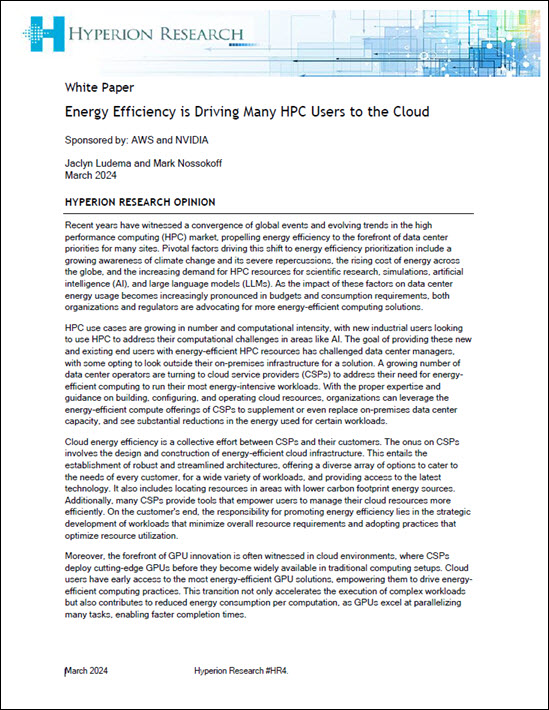In the first report from last week’s PRACEdays15 conference in Dublin, Tom Wilkie from Scientific Computing World considers why so much Exascale software will be open source and why engineers are not using parallel programs.
Sponsored Guest Articles
Microsoft and NVIDIA Together Advance AI
[SPONSORED GUEST ARTICLE] Think of the Microsoft Azure cloud platform as analogous to a general contractor who brings together the most skilled and knowledgeable artisans, technologically speaking, offering the latest and most powerful advanced AI capabilities. This would include the latest NVIDIA AI hardware….
White Papers
Energy efficiency drives HPC to the cloud
The high-performance computing (HPC) market is witnessing a notable shift towards the cloud, partially driven by the benefits of enhanced energy efficiency. According to Hyperion Research nearly every organization running HPC workloads is either already using or investigating the cloud to accelerate application performance, with the cloud market for HPC workloads forecast to reach $11.5 […]
 Featured RSS Feed
Featured RSS Feed
- Why FinOps Needs DataOps ObservabilityIn this special guest feature, Chris Santiago, Vice President/Solutions Engineering, Unravel Data, talks about controlling cloud spend through three phases of the FinOps lifecycle.
 More News from insideBIGDATA
More News from insideBIGDATA
- Artificial Intelligence Means Smaller Teams Doing More with Less Makes the Small Autonomous Teams Structure Even More Important
- Nature Communications Publishes Zapata AI Research on Generative AI for Optimization
- The Solution to Data in Motion Is to Just Stop
- What AI Could, Should, and Would Do
- Video Highlights: Gemini Ultra — How to Release an AI Product for Billions of Users — with Google’s Lisa Cohen
- What Happens When We Train AI on AI-Generated Data?
- Where Artificial Intelligence Is Making a Difference in Healthcare




